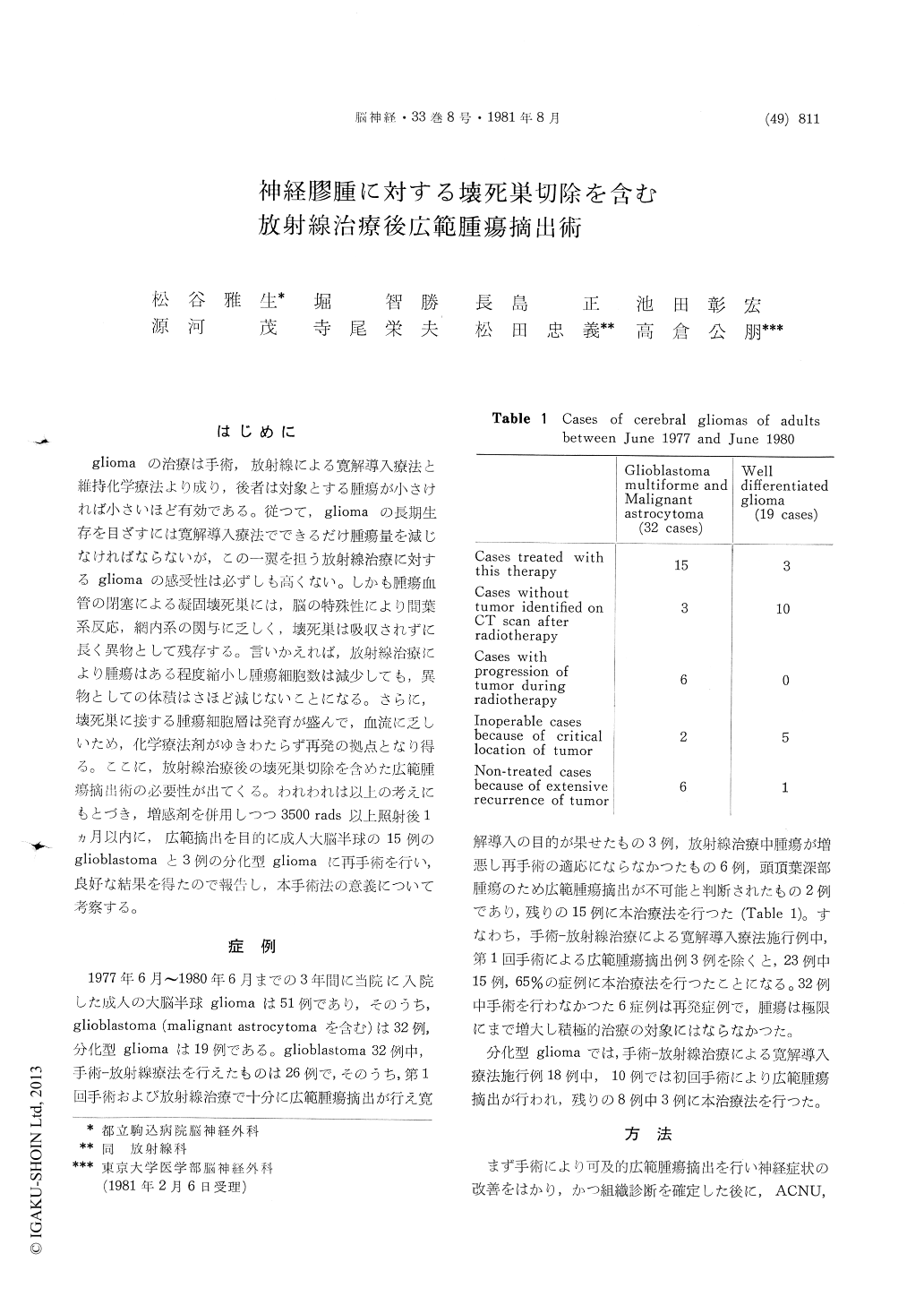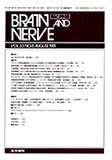Japanese
English
- 有料閲覧
- Abstract 文献概要
- 1ページ目 Look Inside
はじめに
gliomaの治療は手術,放射線による寛解導入療法と維持化学療法より成り,後者は対象とする腫瘍が小さければ小さいほど有効である。従つて、gliomaの長期生存を目ざすには寛解導入療法でできるだけ腫瘍量を減じなければならないが,この一翼を担う放射線治療に対するgliomaの感受性は必ずしも高くない。しかも腫瘍血管の閉塞による凝固壊死巣には,脳の特殊性により間葉系反応,網内系の関与に乏しく,壊死巣は吸収されずに長く異物として残存する。言いかえれば,放射線治療により腫瘍はある程度縮小し腫瘍細胞数は減少しても,異物としての体積はさほど減じないことになる。さらに,壊死巣に接する腫瘍細胞層は発育が盛んで,血流に乏しいため,化学療法剤がゆきわたらず再発の拠点となり得る。ここに,放射線治療後の壊死巣切除を含めた広範腫瘍摘出術の必要性が出てくる。われわれは以上の考えにもとづき,増感剤を併用しつつ3500rads以上照射後1ヵ月以内に,広範摘出を目的に成人大脳半球の15例のglioblastomaと3例の分化型gliomaに再手術を行い,良好な結果を得たので報告し,本手術法の意義について考察する。
Although the radiotherapy for malignant glioma has been reported to be effective in most cases, more than 50% reduction of the tumor volume evaluated by serial CT scans is obtained in only 30-40% of cases treated. This is attributed to a low radiosensitivity of glioma cells on one hand, and to an extremely slow elimination of killed cells or necrotic cellular debris from the tumor bed on the other hand. The ischemic necrotic tissue (coagulation necrosis) produced by an adequate dose of irradiation to glioma remained in situ as a bulky mass for a long time without being scavengered by mesenchymal and/or reticuloendothelial reactions. The ischemic necrotic tissue, even though a non-proliferationg mass, contributes not only to ag-gravate neurologic deficiences, but to inhibit beneficial penetration and distribution of chemothe-rapeutic agents in glioma tissue.
In order to improve the patient's survival in both quality and longevity, the extensive removal of residual tumor including ischemic necrosis was per-formed for 15 cases of glioblastoma and 3 cases of well differentiated glioma in cerebral hemisphere of adults. Results obtained so far are encouraging ones as follows. 1) More than 80% reduction of the tumor volume was achieved in 12 of 18 cases treated. 2) Performance status of the patients evaluated at 3 months after the surgical treatment was also satisfactory ; improved in 11, stationary in 5, and worse in only 2 cases. 3) Twelve cases of glioblastoma showed no recurrence 3 months after treatment and are now receiving a maintenance chemotherapy according to our scheduled regimen. 4) Histological study of tumor tissue in other 3 cases which showed recurrence within 3 months after surgery, revealed that tumors were dominantly composed of radioresistant neoplastic cells.

Copyright © 1981, Igaku-Shoin Ltd. All rights reserved.


